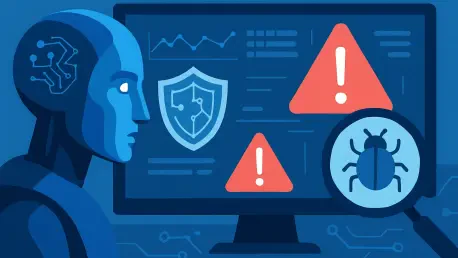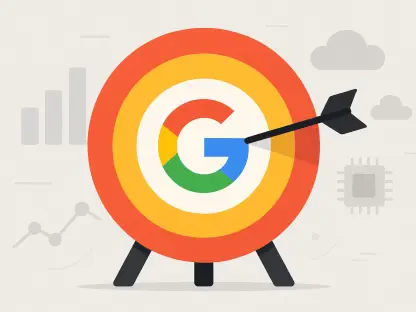In an era where cyber threats evolve at an unprecedented pace, the discovery of hidden vulnerabilities in widely used software has become a critical battleground for tech giants and hackers alike. Imagine a world where a single flaw in a popular open-source tool could compromise millions of systems globally, yet traditional methods fail to detect it in time. This is the stark reality that Google aims to transform with its groundbreaking AI-powered tool, Big Sleep. Developed through a collaboration between Google DeepMind and Project Zero, this innovative vulnerability detector has already made waves by uncovering critical flaws that eluded years of manual reviews. As cyber threats grow more sophisticated, the emergence of such AI-driven solutions signals a seismic shift in how digital security is approached, promising not just to react to dangers but to preempt them with unparalleled precision. This development raises intriguing questions about the future of cybersecurity and the role artificial intelligence will play in safeguarding digital ecosystems.
Unveiling New Frontiers in Vulnerability Detection
AI’s Edge Over Traditional Methods
The ability of AI to outmaneuver conventional cybersecurity techniques is vividly demonstrated by Big Sleep’s recent achievements. Since its debut, this tool has identified twenty previously unknown vulnerabilities in popular open-source software, showcasing a level of insight that manual code reviews and traditional fuzzing often miss. A standout moment came when Big Sleep pinpointed a zero-day flaw in SQLite, a memory corruption issue with a significant severity score, before any malicious exploitation could occur. This breakthrough marked a historic milestone, as it highlighted AI’s potential to uncover deeply buried issues that human efforts had overlooked for years. The implications are profound, suggesting that AI can serve as a proactive shield rather than a reactive patch, fundamentally altering the timeline of threat response in favor of prevention over cure. As cyber attackers increasingly leverage automation, tools like Big Sleep provide a critical counterbalance, ensuring that defenders stay one step ahead in an ever-escalating digital arms race.
Scaling Impact Across Open-Source Ecosystems
Beyond individual discoveries, Big Sleep’s influence extends to the broader open-source community, where vulnerabilities can have cascading effects across countless applications. By targeting widely used tools, the AI ensures that fixes benefit a vast array of systems, amplifying its protective reach. Google’s commitment to eventually disclose these findings publicly, adhering to standard protocols, fosters a collaborative environment where developers worldwide can verify and address flaws. This transparency not only strengthens trust but also accelerates the patching process, reducing the window of opportunity for cybercriminals. Moreover, the tool’s ability to consistently detect real-world issues since its launch underscores a reliability that could redefine standards for software security. As open-source software remains a backbone of modern technology, the integration of AI-driven detection promises to fortify foundational elements of the digital landscape, offering a scalable solution to a problem that grows more complex with each passing day.
Expanding the Arsenal of AI-Driven Security Tools
Automating Forensics with Advanced Platforms
Google’s innovation in cybersecurity doesn’t stop at vulnerability detection; it extends into the realm of digital forensics with tools like Timesketch. This open-source platform, now enhanced with Sec-Gemini, automates initial incident analysis, significantly easing the burden on forensic investigators. Where once hours of manual sifting through data logs were required to piece together the timeline of a breach, AI now streamlines the process, identifying key patterns and anomalies with speed and accuracy. This automation allows security teams to focus on strategic responses rather than getting bogged down in preliminary grunt work. The result is a more efficient workflow that can handle the growing volume of cyber incidents in an increasingly connected world. By reducing human error and accelerating insights, such advancements ensure that organizations can respond to threats with agility, minimizing damage and preserving critical systems in the face of sophisticated attacks that demand rapid countermeasures.
Pioneering Threat Detection with Innovative Approaches
Another dimension of Google’s AI security strategy is embodied in FACADE, a method that leverages contrastive learning to identify internal threats without relying on historical attack data. This approach is particularly valuable in an era where new attack vectors emerge faster than past patterns can be documented. By focusing on behavioral deviations rather than predefined signatures, FACADE adapts to novel challenges, offering a forward-looking defense against insider risks and zero-day exploits. This flexibility marks a departure from traditional models that often lag behind evolving threats, providing instead a dynamic shield that evolves in real time. Additionally, Google’s emphasis on responsible AI development, as detailed in a recent white paper, ensures that such tools are built with safety and transparency in mind. Through principles like human oversight and privacy protection, the company balances cutting-edge innovation with ethical considerations, setting a benchmark for how AI can be harnessed to secure digital environments without compromising trust.
Building a Collaborative Future for Secure AI
Fostering Industry Partnerships and Ethical Standards
Google’s vision for AI in cybersecurity transcends its own tools, embracing a collaborative ethos through initiatives like the Coalition for Secure AI. By sharing insights from the Secure AI Framework, the company contributes to a collective effort to advance secure AI applications across the industry. This spirit of partnership is further evidenced by participation in events like the AI Cyber Challenge at DEF CON, where teams harness AI to bolster open-source software security alongside organizations like DARPA. Such collaborations underscore a growing recognition that no single entity can tackle cyber threats alone; instead, shared knowledge and resources are essential to outpace adversaries. Moreover, Google’s commitment to ethical AI design, emphasizing secure-by-design frameworks, ensures that innovation does not come at the expense of user safety. This balanced approach not only enhances current defenses but also lays a foundation for sustainable progress in a field where trust is as critical as technology itself.
Rewarding Innovation Through Vulnerability Programs
A complementary facet of Google’s strategy is the expansion of the Vulnerability Rewards Program to address AI-specific threats like prompt injection and data exfiltration. In its initial phase, this program awarded over $50,000 for AI-related findings, with a notable portion of reports leading to tangible product improvements. This incentive structure encourages researchers to probe the unique risks posed by AI systems, fostering a community-driven effort to identify and mitigate vulnerabilities before they can be exploited. Unlike traditional bug bounties, the focus on AI-specific issues reflects an understanding of the distinct challenges these technologies introduce, from manipulated inputs to unintended data leaks. By aligning financial rewards with strategic security goals, Google not only accelerates the discovery of critical flaws but also cultivates a culture of proactive vigilance. This initiative proved instrumental in refining AI tools, ensuring they remain robust against emerging threats while reinforcing the broader mission to protect digital ecosystems.
Reflecting on a Paradigm Shift in Cybersecurity
Looking back, Google’s advancements with Big Sleep and complementary tools like Timesketch and FACADE marked a turning point in how cyber threats were addressed. The ability to unearth hidden vulnerabilities, automate forensic analysis, and detect novel threats without historical data demonstrated a profound leap forward. Collaborative efforts through industry coalitions and reward programs further amplified these impacts, weaving a network of shared expertise that strengthened global defenses. As these initiatives unfolded, they underscored a pivotal realization: AI had become an indispensable ally in preempting exploitation and fortifying open-source foundations. Moving forward, the focus should shift toward scaling these innovations, integrating AI deeper into security workflows, and fostering even broader partnerships. Exploring how these technologies can adapt to future threats while maintaining ethical rigor will be crucial, ensuring that the digital realm remains a space of trust and resilience for years to come.









